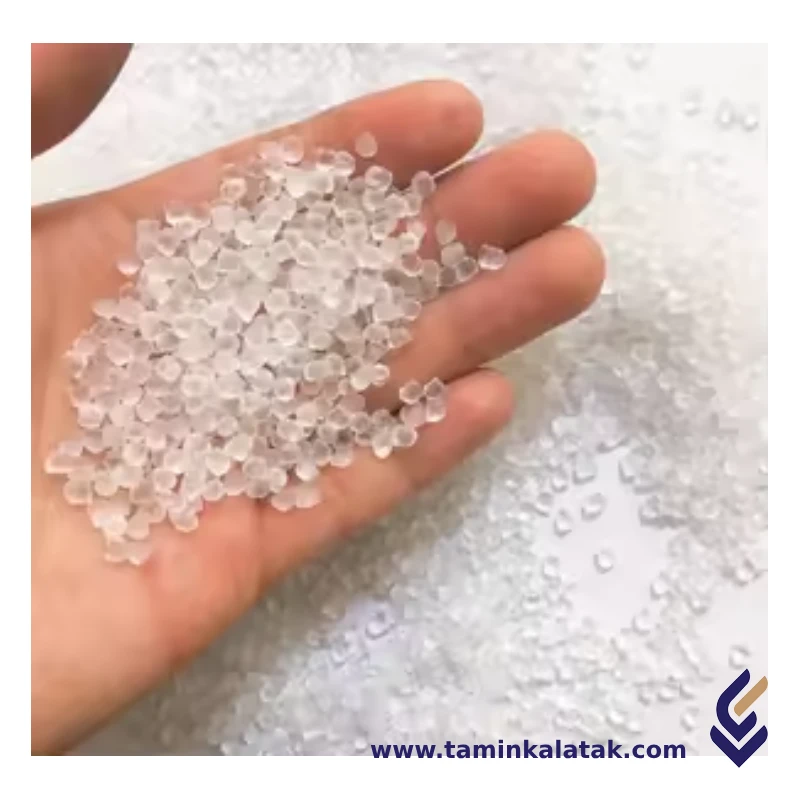Polymers are made up of very large molecules made up of many repeating units called monomers, which ultimately form this long polymer chain
A compound is a polymer blend mixed with additives, fillers, and reinforcements to achieve specific properties for end-use applications. A masterbatch is a concentrated mixture of additives or pigments in a carrier resin, used to enhance plastics without altering their base properties.
Maleic Anhydride Grafted PS
Maleic anhydride grafted polystyrene (PS-g-MA) is a modified form of polystyrene in which maleic anhydride (MA) is chemically grafted onto the polystyrene backbone. This modification enhances the polarity and reactivity of polystyrene, improving its compatibility with other materials, especially polar polymers, fillers, and reinforcements.
Structure Maleic Anhydride Grafted PS
Maleic anhydride grafted polystyrene (PS-g-MA) consists of a polystyrene backbone with randomly grafted maleic anhydride groups along the chain. The polystyrene structure is composed of repeating styrene units, each containing a benzene ring attached to an ethylene backbone. During the grafting process, maleic anhydride molecules, which have a cyclic anhydride functional group, are covalently attached to some of the styrene units through a radical reaction. This results in a modified polymer where the hydrophobic polystyrene chain incorporates polar anhydride groups, typically at irregular intervals. The anhydride functionality provides reactive sites that can undergo further chemical interactions, improving the polymer’s compatibility with polar materials, adhesion properties, and overall performance in blends and composites.
Properties Maleic Anhydride Grafted PS
Maleic anhydride grafted polystyrene (PS-g-MA) exhibits a combination of properties derived from both polystyrene and the grafted maleic anhydride groups. It retains the inherent rigidity, transparency, and processability of polystyrene while gaining increased polarity and reactivity due to the anhydride functionality. The presence of maleic anhydride improves compatibility with polar polymers and fillers, enhances adhesion to various substrates, and allows for chemical modifications through reactions with nucleophiles like amines and alcohols. This modified polymer also demonstrates improved mechanical properties in certain applications, particularly in polymer blends where better interfacial adhesion leads to enhanced toughness and durability. Its thermal stability remains close to that of pure polystyrene, but processing conditions may need slight adjustments due to the reactive nature of the anhydride groups. Additionally, PS-g-MA can exhibit improved wettability and dispersion in composite materials, making it valuable in applications requiring enhanced interfacial interactions.
Applications Maleic Anhydride Grafted PS
- Used as a compatibilizer in polymer blends, especially with polar polymers like polyamides and polyesters.
- Enhances adhesion in composite materials, improving bonding with fillers, fibers, and reinforcements.
- Serves as an adhesion promoter in coatings, adhesives, and surface treatments.
- Acts as a reactive modifier for polystyrene, allowing further functionalization through chemical reactions.
- Improves dispersion and interfacial adhesion in polymer nanocomposites.
- Used in impact modification of engineering plastics to enhance mechanical properties.
Advantages Maleic Anhydride Grafted PS
- Enhances compatibility between polystyrene and polar materials.
- Improves adhesion and bonding strength in composites and coatings.
- Provides reactive sites for further functionalization and chemical modifications.
- Retains the lightweight and processability of polystyrene while adding functional benefits.
- Enhances mechanical properties such as toughness and durability in polymer blends.
Disadvantages Maleic Anhydride Grafted PS
- May slightly alter the thermal and processing behavior of polystyrene.
- The grafting process can introduce variability in properties depending on the degree of grafting.
- The presence of anhydride groups can make the material more sensitive to moisture and hydrolysis.
- Cost may be higher than unmodified polystyrene due to the additional processing steps.
Applications
| Applications | , , |
|---|
grafted PS
| Products | MFI (g/10 min) | Density (g/Cm3) | Process Method | Applications | Data Sheet | MSDS |
|---|---|---|---|---|---|---|
| grafted PS | 3-15 | 1.04-1.07 | injection molding, extrusion, compression molding, and blow molding | Polymer Blends and Alloys Composite Materials Adhesives and Coatings Impact Modification Packaging and Automotive Parts |







